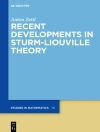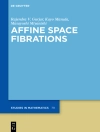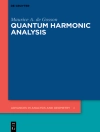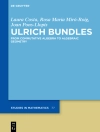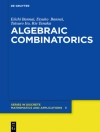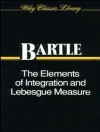This volume is the first (I) of four under the main themes of Digitizing Agriculture and Information and Communication Technologies (ICT). The four volumes cover rapidly developing processes including Sensors (I), Data (II), Decision (III), and Actions (IV). Volumes are related to ‘digital transformation” within agricultural production and provision systems, and in the context of Smart Farming Technology and Knowledge-based Agriculture. Content spans broadly from data mining and visualization to big data analytics and decision making, alongside with the sustainability aspects stemming from the digital transformation of farming. The four volumes comprise the outcome of the 12th EFITA Congress, also incorporating chapters that originated from select presentations of the Congress.
The focus in this volume is on different aspects of sensors implementation in agricultural production (e.g., types of sensors, parameters monitoring, network types, connectivity, accuracy, reliability, durability, and needs to be covered) and provides variety of information and knowledge in the subject of sensors design, development, and deployment for monitoring agricultural production parameters. The book consists of four (4) Sections. The first section presents an overview on the state-off-the art in sensing technologies applied in agricultural production while the rest of the sections are dedicated to remote sensing, proximal sensing, and wireless sensor networks applications.
Topics include:
- Emerging sensing technologies
- Soil reflectance spectroscopy
- Lo Ra technologies applications in agriculture
- Wireless sensor networks deployment and applications
- Combined remote and proximal sensing solutions
- Crop phenology monitoring
- Sensors for geophysical properties
- Combined sensing technologies with geoinformation systems
表中的内容
Section I: Overview: Emerging Sensing Technologies for Precision Agriculture (Pardalos).- Soil reflectance spectroscopy for supporting Sustainable Development Goals (Angelopoulou).- Proximal sensing sensors for monitoring crop growth (Hallik).- Section II: Wireless network systems applications: Experimental performance evaluation techniques of Lo Ra radio modules and exploitation for agricultural use (Loukatos).- Evaluating the performance of a simulated softwarized agricultural wireless sensor network (M. Mostaco).- Smart agriculture: A low-cost wireless sensor network approach (Angelis).- Section III: Remote sensing applications: Potential of Sentinel-2 satellite and novel proximal sensor data fusion for agricultural applications (Pandžić).- Trends in satellite sensors and image time series processing methods for crop phenology monitoring (Verrelst).- Drone imagery in support of orchards trees vegetation assessment based on spectral indices and deep learning (Șandric).- Section IV: Proximal sensing applications: What does the NDVI really tell us about crops? Insight from proximal spectral field sensors (Atherton).- Geophysical sensors for mapping soil layers – a comparative case study using different electrical and electromagnetic sensors (Luck).- Geoinformation technologies in pest management: mapping olive fruit fly population in olive trees (Papafilippaki).- In-field experiments for performance evaluation of a new low-cost active multispectral crop sensor (Tagarakis).
关于作者
Dionysis Bochtis works on the field of engineering for agricultural production under enhanced ICT, automation, and robotics technologies. His Research/Academic track-record includes positions such as: Director of the Institute for Bio-economy and Agri-technology (IBO | CERTH); Professor (Agri-Robotics) University of Lincoln, UK, and Senior Scientist (Operations Management), Aarhus University, Denmark. He is the founder of the agri-tech Private Company farm B Digital Agriculture.
Maria Lampridi is a Mechanical Engineer focusing, through her MSc and Ph D studies, on Environmental Management and Sustainability. Main research areas include life cycle assessment of agricultural production systems and sustainability assessment of advanced agri-technologies as parts of these systems. Currently she is a Research Assistant in the Institute of Bio-economy and Agri-technology (i BO) of the Center for Research and Technology Hellas (CERTH).
George P. Petropoulos is Assistant Professor in Geoinformatics at the Dept. of Geography, Harokopio University of Athens. His main research interests include: geoinformation with emphasis on applications in physical geography/environment and/or human geography and/or spatial planning, the use of cutting-edge technologies (Earth Observation, GIS, GPS, web, digital cartography) in geographical applications and the presentation, processing, and analysis of geographical data.
Yiannis Ampatzidis is Assistant Professor in precision agriculture and smart machines at the Department of Agricultural & Biological Engineering, University of Florida. He works in the area of mechanization and automation of specialty crop production. His current research focuses on mechanical harvesting of specialty crops, mechatronics, artificial intelligence, machine vision, precision agriculture, precision irrigation, smart machines, UAVs and machine systems.
Panos Pardalos is a world leading expert in global and combinatorial optimization. He serves as Distinguished Professor of industrial and systems engineering at the University of Florida. Additionally, he is the Paul and Heidi Brown Preeminent Professor of industrial and systems engineering. He is also an affiliated faculty member of the computer and information science Department, the Hellenic Studies Center, and the biomedical engineering program. He is also the Director of the Center for Applied Optimization.





